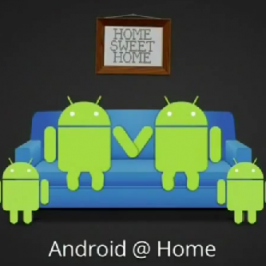Home Automation has been an overly-priced luxury reserved for the rich, famous, or nerds. Now Google is stepping up to finally ditch the old lightswitch.
Hands up who’s seen Iron Man? I gotta say I loved Iron Man, and I especially loved Jarvis (I assume that’s how his name is spelt) the computer which runs the home of Tony Stark. Where we are technologically today, a system should be able to be created that could act almost exactly like Jarvis, turning lights on/off when we forget to, opening blinds etc.
Being the nerd I don’t claim to be, I’ve had a look into home automation technology, and I’ve gotta say, it sucks. There are a couple of home automation systems around. Most are expensive. Unless of course you’re lucky to find some gear on clearance at your local hardware shop.
From what I’ve seen, most of the systems today use your power lines to communicate. This means for each appliance you want to control, you have need to have a “receiver” which acts like a switch, either turning power on or off to the connected devices, by transmitting a signal through your power lines. This works great for lights. I myself have 2 lamps beside my TV, and 2 Sony sub woofers controlled with this technology. An IR receiver module allows me to press “watch movie” on my Harmony remote, and presto the lights, sub woofers and TV all turn on together. I’ve also got it setup so I can turn off the router which is outside when it freezes.
This is using X10 technology. And its pretty slow. The reason being behind the cables transmitting the signals. Power Lines were never meant to carry anything more than power through them, but now we’re seeing home Ethernet connections being run through them, as well as other systems. This is achieved by the use of AC power in homes. Unlike electricity in your car which is run off a direct current (DC) battery, your home 240v lines use Alternating Current (AC). Now I’m no electrician, but from what I can tell on how it works, the X10 sends its signals through your power lines in between the different currents. This is where the signal can get lost, or take some time for the current to switch before it can send out its signal.
The technology has been around for years, but in the same time we’ve watched our mobiles evolve, Facebook and Twitter have been born, and the tech world has changed a lot, except for home automation.
Don’t get me wrong. The current technology can do some pretty cool things. You can hook up light sensors, curtain controls, and even sprinkler systems, all to be controlled wirelessly. And take it one step further, and plug your computer in with a transmitter, and you can have the house open and close blinds in the morning, water your garden every third night (unless it’s rained, it can detect that), and turn off lights that you may have accidentally left on when you go to sleep. If you’re interested, Google HAL Home Automation.
Engadget reported back in May this year of Google’s announcement of Android@Home. Instead of using power lines to communicate, the technology looks like it’s going to use WiFi and perhaps RFID (Near field communication) chips. Googles example showed that lights could be turned on and off based on calendar events, a CD with an RFID chip that would send the track details to a mobile device near it, etc.
Engadget seemed a bit disappointed that Android@Home won’t be using existing home automation standards, including Z-wave. To be honest, I don’t know much about Z-wave, but I’m not against Android@Home having its own standard. I would rather Google be the one to implement this standard, than a garden walled company like Apple.
From my understanding, WiFi controller modules would be placed on your appliances. A control unit (probably your Android mobile, or a PC running some software) will send a signal over your WiFi to power on/off these devices. I think we’ll definitely need to see IPv6 rolled out on these puppies, as a lot of devices would be fighting for IP addresses (even if the addresses were limited to a local subnet).
So I am eagerly awaiting Android@Home. I think there’s definitely a market to be had in home automation, and a lot of powerful things can be done with it. We just need to make it accessible and efficient enough to work for the masses.
Final thought for the day… Isn’t it good to see Google using their powers for good, while Apple claim everyone is copying them, and suing everyone who threatens them. My war on Apple continues…






